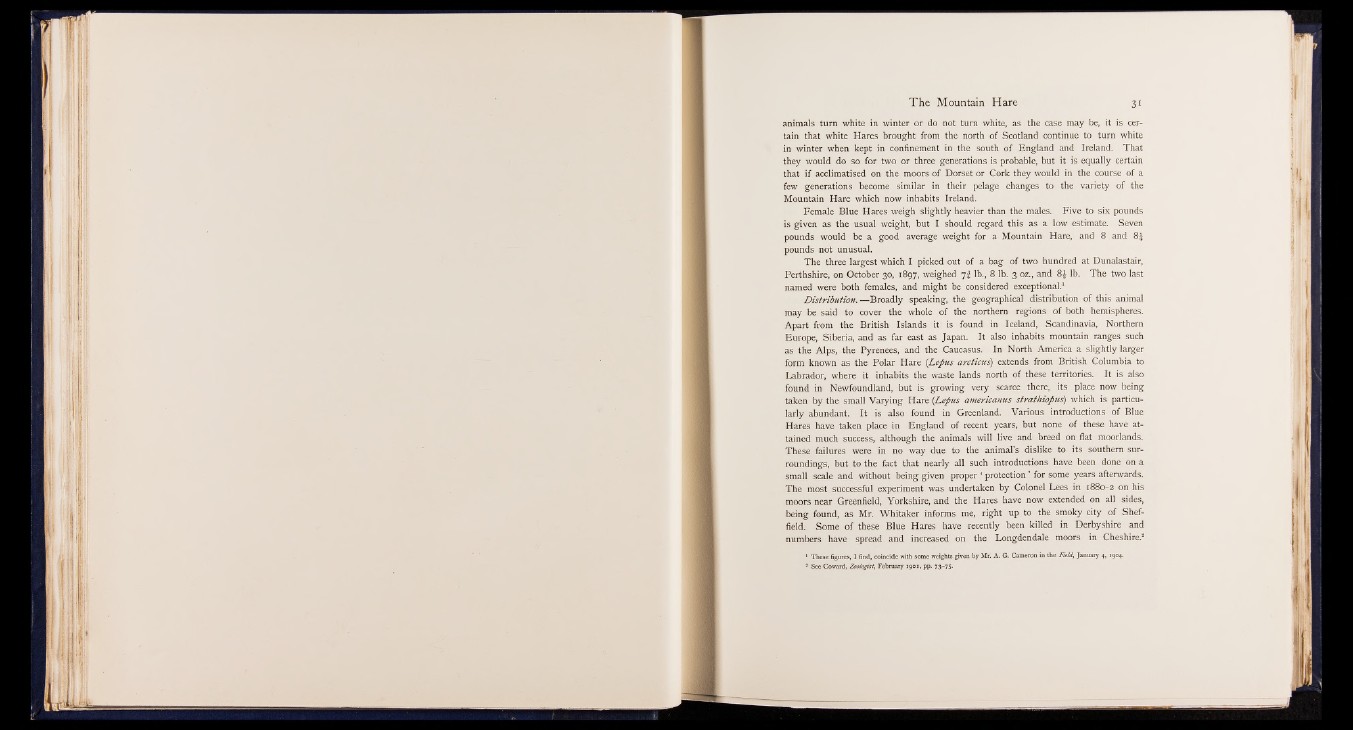
animals turn white in winter or do not turn white, as the case may be, it is certain
that white Hares brought from the north of Scotland continue to turn white
in winter when kept in confinement in the south of England and Ireland. That
they would do so for two or three generations is probable, but it is equally certain
that if acclimatised on the moors of Dorset or Cork they would in the course of a
few generations become similar in their pelage changes to the variety of the
Mountain Hare which now inhabits Ireland.
Female Blue Hares weigh slightly heavier than the males. Five to six pounds
is given as the usual weight, but I should regard this as a low estimate. Seven
pounds would be a good average weight for a Mountain Hare, and 8 and 85
pounds not unusual.
The three largest which I picked out of a bag of two hundred at Dunalastair,
Perthshire, on October 30, 1897, weighed 7I lb., 8 lb. 3 oz., and 8£ lb. The two last
named were both females, and might be considered exceptional.1
Distribution.— Broadly speaking, the geographical distribution of this animal
may be said to cover the whole of the northern regions of both hemispheres.
Apart from the British Islands it is found in Iceland, Scandinavia, Northern
Europe, Siberia, and as far east as Japan. It also inhabits mountain ranges such
as the Alps, the Pyrenees, and the Caucasus. In North America a slightly larger
form known as the Polar Hare (Lepus arcticus) extends from British Columbia to
Labrador, where it inhabits the waste lands north of these territories. It is also
found in Newfoundland, but is growing very scarce there, its place now being
taken by the small Varying Hare {Lepus americanus strathiopus) which is particularly
abundant. It is also found in Greenland. Various introductions of Blue
Hares have taken place in England of recent years, but none of these have attained
much success, although the animals will live and breed on flat moorlands.
These failures were in no way due to the animal’s dislike to its southern surroundings,
but to the fact that nearly all such introductions have been done on a
small scale and without being given proper ‘ protection ’ for some years afterwards.
The most successful experiment was undertaken by Colonel Lees in 1880-2 on his
moors near Greenfield, Yorkshire, and the Hares have now extended on all sides,
being found, as Mr. Whitaker informs me, right up to the smoky city of Sheffield.
Some of these Blue Hares have recently been killed in Derbyshire and
numbers have spread and increased on the Longdendale moors in Cheshire.2
1 These figures, I find, coincide with some weights given by Mr. A. G. Cameron in the Field, January 4, 1904.
* See Coward, Zoologist, February 1901, pp. 73-75.